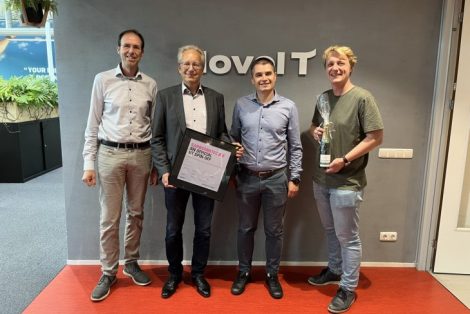-
Twente researchers develop clay-based CO₂ capture for biogas
Date posted:
-
-
Post Author
Tracey Biller
-

A research team at the University of Twente has developed a method to remove carbon dioxide from biogas using a specialised clay material. A spin-off company, CarbSorbTec, has been created as a result of the discovery.
The research started as fundamental work under Frieder Mugele, chair of Physics of Complex Fluids, and was taken up by two PhD candidates. Says Professor Mugele, “Clay has a layered structure. Through ion exchange, we can adjust the distance between those layers precisely. That allows CO₂ molecules to attach to the clay, while methane, the useful part of biogas, passes straight through.”
Biogas typically contains around 60 per cent methane and 40 per cent CO₂. Selectively capturing the carbon dioxide leaves pure methane that can be upgraded to biomethane, an alternative to natural gas. The technology is energy-efficient, low-cost, and therefore suitable for smaller-scale applications, such as farms or waste treatment plants.
The researchers conducted experiments with different types of clay and showed that the material not only works but is also reusable – an important step towards practical deployment.
The next phase is scaling up. The first pilot tests are scheduled for late 2025, at a wastewater treatment facility and on a farm. If successful, the technology could be applied worldwide. Especially in developing regions, the simplicity of the process offers huge potential: biogas systems could provide clean energy without the need for complex infrastructure.
CarbSorbTec has filed a patent to protect the innovation, supported by Novel-T, the university’s technology transfer office.
The research team is also exploring broader applications, including using CO₂ as a feedstock for new chemical processes, aiming to transform the gas from a waste product into a resource. “A new economy must emerge where CO₂ is no longer seen as waste but as a building block,” said Mugele. “And our clay technology can contribute to that vision.”
